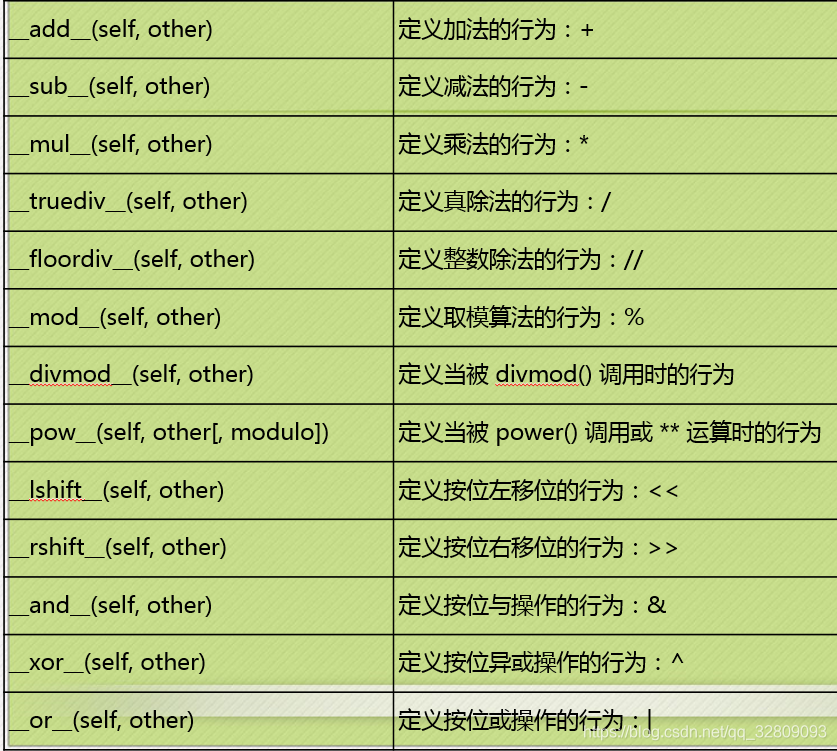python2.2以后,对类和类型进行了统一,做法就是讲int()、float()、str()、list()、tuple()这些BIF转换为工厂函数(类对象):
1 >>> type(len)
2 <class 'builtin_function_or_method'> #普通的BIF
3 >>> type(int)
4 <class 'type'> #工厂函数(类对象),当调用它们的时候,其实就是创建了一个相应的实例对象
5 >>> type(dir)
6 <class 'builtin_function_or_method'>
7 >>> type(list)
8 <class 'type'>
9
10 >>> a = int('123') #创建一个相应的实例对象a
11 >>> b = int('345')
12 >>> a + b #python在两个对象进行相加操作
13 468

举个例子,下面定义一个比较特立独行的类:
1 >>> class New_int(int):
2 def __add__(self,other):
3 return int.__sub__(self,other)
4 def __sub__(self,other):
5 return int.__add__(self,other)
6
7
8 >>> a = New_int(3)
9 >>> b = New_int(5)
10 >>> a + b #两个对象相加,触发 __add__(self,other)方法
11 -2
12 >>> a - b
13 8
14 >>>
实例2:
1 >>> class New_int(int):
2 def __add__(self,other):
3 return (int(self) + int(other)) #将self与other强制转换为整型,所以不会出现两个对象相加触发__add__()方法
4 def __sub__(self,other):
5 return (int(self) - int(other))
6
7
8 >>> a = New_int(3)
9 >>> b = New_int(5)
10 >>> a + b
11 8

